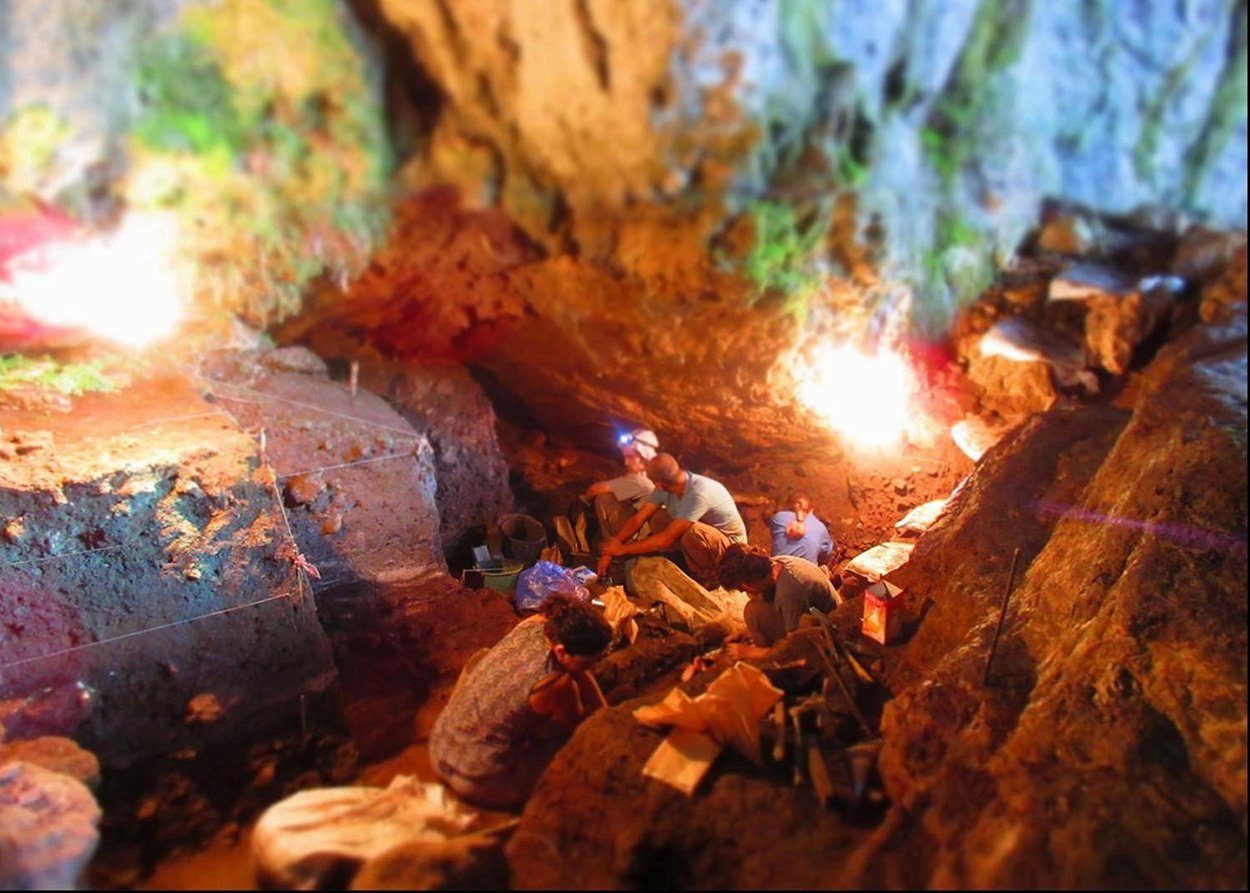
These scientists are not just looking for bones and other tangible evidence of the past. In the Satsurblia Cave in the Caucasus, they also searched for the millennia-old DNA of animals and humans.
The Satsurblia Cave in the Georgian Caucasus has been used again and again by humans and animals as a place of refuge and accommodation since the Paleolithic Age. Who was there and when, however, cannot be determined from fossil relics – they are missing. The team of scientists shown in the photo has therefore chosen a different approach: They searched for so-called environmental DNA.
Unlike the genetic material that is obtained from fossil bones or teeth in the context of archaeological studies, the environmental DNA comes from soil samples and is not linked to skeletal remains. Instead, the researchers are trying to isolate the genetic material directly from the sediment. Once this is done, the DNA fragments obtained are sequenced and compared with genetic databases. This then allows the genetic findings to be assigned.
In the case of the DNA search in the Satsurblia cave documented here, the team led by Pere Gelabert from the University of Vienna found several things: In a 25,000-year-old layer of soil, the researchers identified fragments of a human genome that was found in this cave before the Ice Age People seeking refuge. Its genome shows genetic similarities to that of a skeleton from this period found in a neighboring cave, as the researchers report.
Further genome fragments from the Satsurblia cave could be assigned to primeval wolves and bison. These sequences are now used to reconstruct the population history of wolf and bison in the Caucasus and thus contribute to a better understanding of the population dynamics of these animal species.